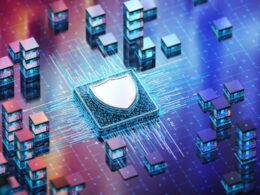The SLAM Method Cyber Security is an approach to cybersecurity that emphasizes constant scanning, logging, analyzing, and monitoring of networks and systems. The goal is to take a more proactive stance on security rather than just reacting to threats and incidents after they occur.
SLAM involves leveraging tools and processes to gain greater visibility into networks, detect anomalies and threats early, and facilitate faster response when attacks do occur. The four pillars of the SLAM method provide layers of protection and awareness.
Table of Contents
The Components of SLAM
Scanning Networks and Systems
The “S” in SLAM stands for scanning. This means regularly scanning infrastructures, applications, databases, and other systems for vulnerabilities. Scanning uncovers security gaps like missing patches, misconfigurations, and unauthorized access that could be exploited by attackers.
Some important scanning tools include vulnerability scanners, port scanners, and penetration testing tools. Scanning provides the intelligence needed to tighten security and proactively fix issues before they lead to breaches.

Logging Activity and Events
The “L” represents the logging of activity on networks, endpoints, and systems. Effective logging enables the collection of security data like access attempts, Policy changes, and Administrator activity.
Centralized logging systems like SIEM solutions make it easier to store and analyze large volumes of log data. Logs provide audit trails that are crucial for understanding what happened during and after a security incident.
Analyzing the Data
The “A” in SLAM stands for analysis. The scan and log data generated is meaningless if it is not analyzed. Security teams should regularly review scans to identify critical vulnerabilities and analyze event logs to spot abnormal behaviors.
Data analytics tools equipped with machine learning and statistical analysis can help automate the analysis process. The insights uncovered from the analysis inform threat hunting and drive security improvements.
Monitoring Networks in Real-Time
The “M” represents real-time monitoring of networks, systems, and data access. Monitoring provides situational awareness enabling the quick detection of and response to security incidents.
Security dashboards can track metrics like unauthorized attempts, traffic patterns, and system availability. Monitoring solutions can also trigger alerts when specific rules or thresholds are violated.
Benefits of Using SLAM for Cybersecurity
More Proactive Security
The SLAM method shifts security to a proactive posture instead of just reacting to incidents. The constant scanning and monitoring enables threats to be caught early before they escalate into major attacks.

Weak points can also be fixed methodically based on data instead of relying on outdated assumptions of what needs to be secured. This minimizes opportunities for attackers.
Better Visibility into Networks
The volume of scan, log, and monitoring data provides unparalleled visibility into modern IT environments. SLAM removes blind spots and enables security personnel to see risky user activities, unauthorized access attempts, vulnerabilities, and more.
This allows vulnerabilities and threats to be identified and addressed before they are exploited. Challenging security incidents can also be more quickly understood using collected SLAM data.
Faster Incident Response
The use of SLAM facilitates rapid detection and remediation of security incidents. Threats spotted through scanning and monitoring can trigger playbooks for immediate action.
Rich logging and analytics also speed up post-incident forensic analysis and learning. Teams spend less time piecing together what went wrong because the data has already been gathered.
Implementing the SLAM Method
Choosing the Right Tools
A suite of well-integrated SLAM tools is essential for success. The tools must provide broad coverage, generating high-fidelity data while minimizing impact on performance. Examples include Tenable, Rapid7, Elastic, and Splunk solutions.
Tools should be quick to deploy, require low maintenance, and avoid complex agents. Prioritize scalable SaaS options over on-premise tools requiring hardware and maintenance.

Developing Processes and Procedures
Processes and procedures must exist for managing, analyzing, and responding to the data generated. Documented protocols for scanning frequencies, log analysis, alert handling, and vulnerability remediation are needed.
Processes should balance thoroughness with efficiency to avoid getting overwhelmed with too much data.
Start with critical assets, then expand scope.
Training Security Staff
Since SLAM involves many tools, security staff need training to use them properly. Education is also needed on interpreting scan findings, digging into logs, discerning false positives, and responding per documented procedures.
Cross-training helps reduce reliance on individual employees. Plan ongoing training as tools and processes evolve.
Getting Buy-In from Management
Executive and infrastructure management buy-in helps secure budget and resources. Make the business case by emphasizing reduced risk and the ability to thwart costly breaches.
Start with a well-scoped pilot focused on critical assets before expanding company-wide. Quick wins build credibility with management.
Challenges of the SLAM Method
Generating Too Much Data
The comprehensive monitoring and logging central to SLAM generates tremendous amounts of security data, which is hard to manage and store effectively. This can bury teams in redundant or low-value data.
Careful tuning and data management are required to control volumes while retaining what matters. Scrub data automatically where possible to minimize manual overhead.
Expensive Tools and Staffing
Implementing extensive scanning along with log management and monitoring capabilities can get expensive, especially for larger businesses. The costs of tools, infrastructure, and staffing add up quickly.
Prioritize tools and coverage based on business risk. Focus early efforts on essential data sources and mission-critical assets, then expand cautiously. Make use of cloud services to minimize infrastructure costs.
Ongoing Maintenance and Upkeep
The SLAM method requires considerable effort to maintain. Tools must be kept updated. Logs and scan findings have to be consistently reviewed and addressed. Monitoring rules and models need tuning to adapt to changing behaviors.
Automation and AI help by handling mundane tasks like data correlation and clean-up. But qualified personnel are still needed to handle incidents, tune systems, and keep improving processes. Training and cross-utilization help reduce dependency on individuals.
The Future of SLAM Method Cyber Security
SLAM is evolving into a cybersecurity best practice because it strengthens defenses and enables quicker response. As tools continue improving, SLAM coverage will only expand. Cloud monitoring and managed detection and response services will make SLAM more accessible to small and mid-sized organizations.
At the same time, integrating too many tools can create complex environments that are hard to manage. Vendor consolidation and platforms that natively integrate scanning, logging, analysis, and monitoring will help streamline SLAM capabilities.
The capabilities unlocked by SLAM will become available to more security teams. But skillsets and staffing will be stretched thin by exploding volumes of data. Automation and AI assistance will need to step up to fill the gaps.
When implemented with balanced processes, SLAM paves the way for proactive cyber defense powered by intelligence.
Conclusion
The SLAM cybersecurity methodology focuses on continuous scanning, logging, analysis, and monitoring to provide enhanced network visibility, threat detection, and incident response.
Leveraging the right tools and practices allows moving security to a more proactive posture. SLAM enables finding and plugging weaknesses before attackers exploit them.
With greater situational awareness, threats can be caught faster, and quick action taken to contain impacts. Although managing all the data generated poses challenges, SLAM is becoming a cybersecurity best practice. When done right, the time and resources invested will pay dividends in risk reduction and resilience.
FAQs
What are some key SLAM tools?
Some important SLAM tools include vulnerability scanners like Tenable and Rapid7, SIEM solutions like Splunk and IBM QRadar, and UEBA tools like Vectra and Gurucul.
What level of staffing is needed to implement SLAM?
At a minimum, dedicated operations staff is needed to run and interpret scans, analysts to comb through logs, and security engineers to monitor networks and systems. Larger deployments require multiple staff across these roles.
What are the benefits of SLAM over traditional security?
SLAM enables proactive threat detection, improved situational awareness, and rapid incident response compared to traditional reactive security methods.
What are the best practices for effective SLAM analysis?
Use risk-based prioritization of assets for scanning/monitoring. Tune systems to minimize false positives. Have documented processes for handling alerts. Dedicated staff for analysis roles. Maintain depth via cross-training.
How can SLAM data overload be managed?
Prioritize logging for only necessary data sources. Use machine learning for automated log analysis. Aggregate data into dashboards. Enforce data retention policies. Archive older data.









